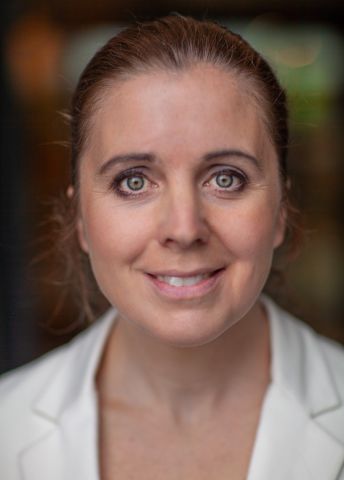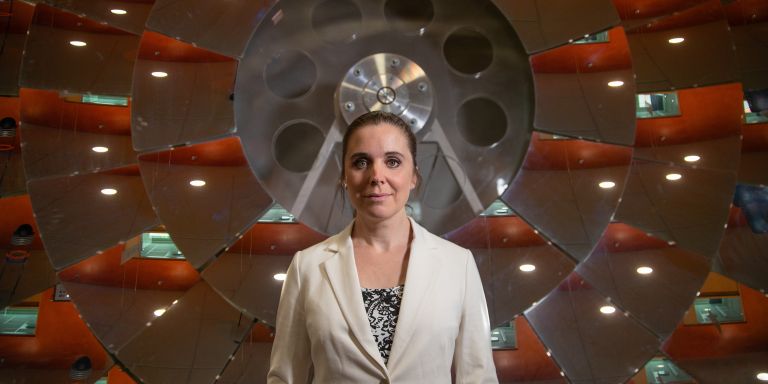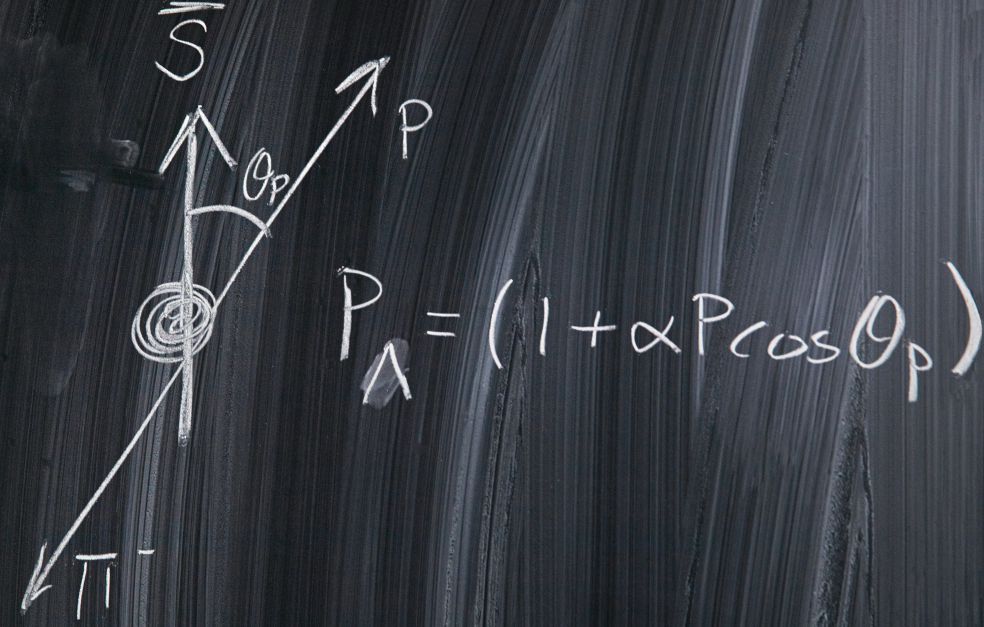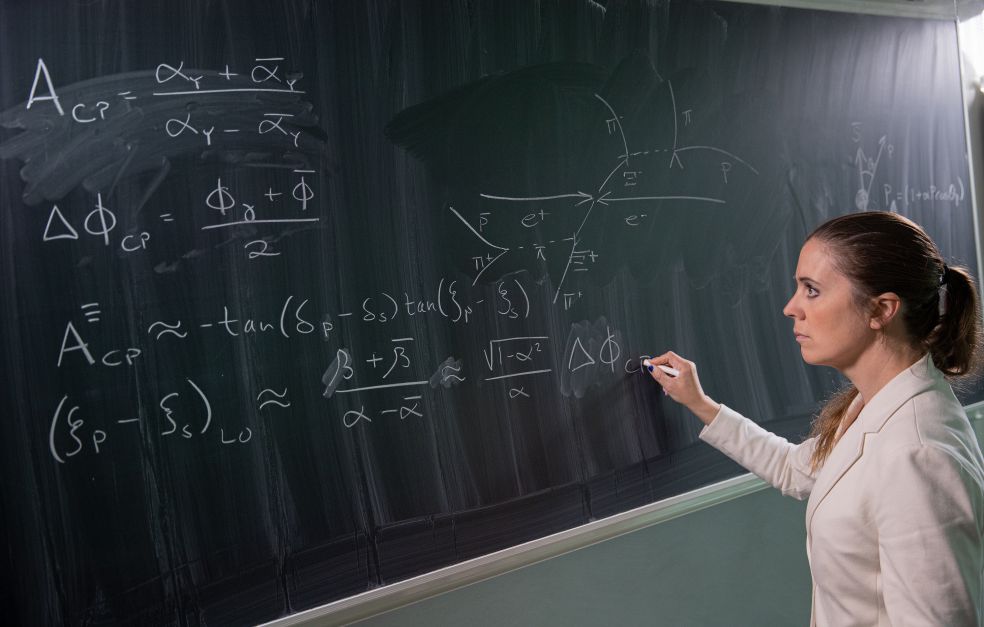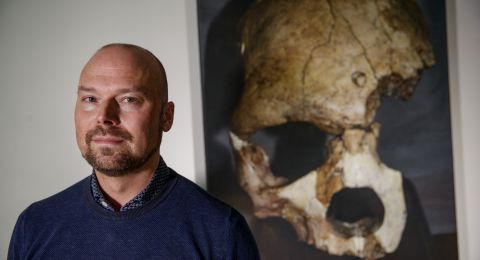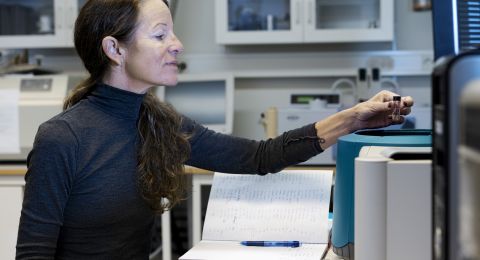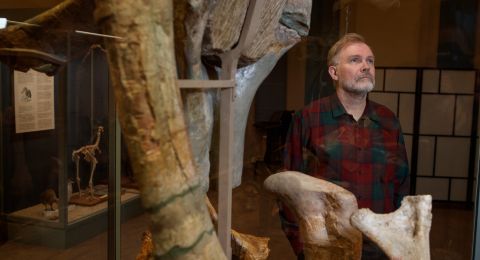Among the greatest mysteries of nuclear physics are the strong force in nature, and why the universe contains more matter than antimatter. In an effort to get closer to a solution, Karin Schönning is studying some of the tiniest building blocks of matter. She is driven by a desire to understand how everything fits together.
Karin Schönning
Professor of Physics
Wallenberg Academy Fellow/Wallenberg Scholar
Institution:
Uppsala University
Research field:
Hadron physics, particularly studies of systems – hyperons – in which light quarks are replaced by heavier ones
When the universe was born from the Big Bang some 14 billion years ago, matter and antimatter were created in equal quantities. The meeting between them should have obliterated both of them, but something happened. An absence of perfect symmetry caused more particles of matter than of antimatter to survive the Big Bang, a surplus large enough to create the universe we know, containing galaxies, stars and planets, including Earth, of course.
But why so much matter survived the Big Bang remains a mystery, along with why and how the strong force keeps matter in the universe together. Schönning, who is a professor of nuclear physics at Uppsala University, explains:
“Something must have happened at the dawn of the universe that caused matter to remain and form the universe as we know it. But we still don’t understand how it could happen. We see this as a giant puzzle – each of us is trying to find a few of the missing pieces.”
Hyperons the key
Schönning has chosen to focus on hyperons – some of the very smallest building blocks of matter. They can be seen as unstable siblings of protons.
“Simply put, protons consist of three quarks. In hyperons, at least one of the quarks is replaced by a heavier variant – a strange or charm quark.”
Nuclear physicists are interested in hyperons because they exist in an energy field where the strong force is at its most incomprehensible. Hyperons are seen as a key to understanding more about visible matter in the universe.
Data is being gathered in special experimental units in which hyperons are formed from collisions between protons and antiprotons. The hyperons disintegrate at extremely high speeds – a process that provides valuable information about the entanglement and direction of the particles.
“For us the most important property of hyperons is that as they disintegrate they reveal their inner magnet – their spin.”
A world milestone
Schönning and her colleagues have measured the spin properties, enabling them to produce a “snapshot” of how a certain kind of hyperons-antihyperons are formed – a research milestone. The image is not a true photograph; rather it represents an array of parameters at a given point in time.
“Ours is the first experiment in the world that has successfully reconstructed a complete snapshot of the creation process of a hyperon-antihyperon pair from pure energy.”
Ultimately the researchers want to collect more sets of parameters by carrying out measurements at different energy levels.
“The funding provided by the Wallenberg Foundation represents a great opportunity for us as young researchers in Sweden. I’ve been given the opportunity to develop as a research leader, and have been able to establish my own operation. Without this generous support I wouldn’t be where I am now.”
“So far we have captured a snapshot. The next step is to take a series of snapshots so that we can produce something resembling a film of how hyperons form.”
Schönning also plans to analyze different types of hyperon.
“We started with the lambda hyperon, which is formed in large numbers and is fairly easy to measure. But we also want to find out how other hyperons behave – cascade hyperons, for instance.”
Cascade hyperons are so named because they contain two strange quarks and disintegrate in two stages.
“We’re developing our methods so we can study heavier hyperons. One challenge is that they disintegrate in much more complicated patterns.”
The researchers are also using patterns of disintegration to ascertain what happened to antimatter at the dawn of the universe. One hypothesis is that particles and antiparticles do not abide by precisely the same laws. This may be due to an interaction between the strong and the weak force. The idea is to use hyperons as a search tool, enabling the scientists to ascertain how strong and weak processes contribute in different ways.
“We have a mixture of strong and weak effects. Given that the hyperons disintegrate in two stages, we have realized that it ought to be possible to separate the different contributions.”
New experiment facilities
To pursue the research the team needs access to more advanced experimental facilities. Funding from Knut and Alice Wallenberg Foundation has enabled them to use Belle II in Japan, where data can be collected more intensively and at higher energy levels. Schönning is also playing an active role in building up the PANDA nuclear and hadron physics facility at the FAIR research center in Darmstadt, Germany. The joint project involves over 500 researchers from 17 countries.
It usually takes many years to analyze the data that are gathered. Patience is needed, but the researchers reap the rewards step by step in the form of greater understanding and the hope of future breakthroughs in fundamental physics.
“Studying hyperons gives us new angles from which to approach a theoretical understanding of these systems. And we know from past experience that it will eventually bring us closer to solving the mystery,” says Schönning.
“But our ‘million-dollar question’ is difficult: what forms the matter we are made of, and the strong force that keeps protons together in the atomic nuclei? If the strong force did not work as it does, matter could not be bound together in this way. It’s incredibly hard to understand.”
Text Nils Johan Tjärnlund
Translation Maxwell Arding
Photo Magnus Bergström
